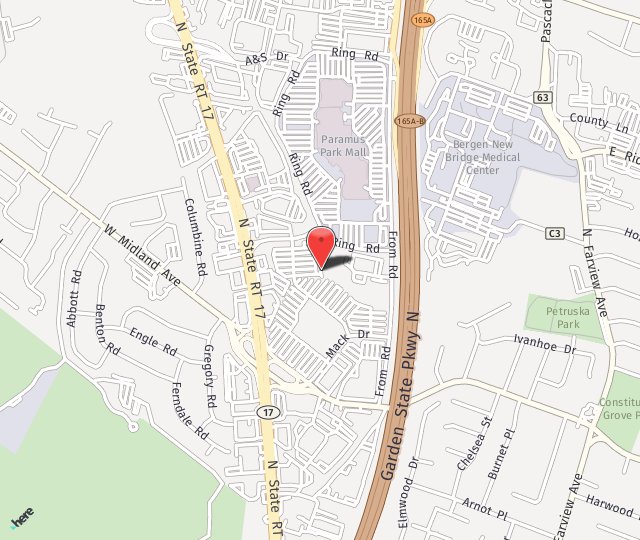
People often misconstrue what is really happening when some men have overly large breasts. They assume it’s a simple result of carrying extra weight. Reality can be quite different.
Many men, estimates place the number between 40 to 60%, suffer from gynecomastia, the clinical term for enlarged male breasts. Most men do nothing about their enlarged breasts, other than maybe being reluctant to remove their shirts when at the beach or on a boat. The condition can really impact a man’s self-esteem.
Dr. Ferraro performs male breast reduction surgery to correct the condition. He removes excess skin, fat, and glandular tissue from the breasts, returning them to a normal size, and at the same time returning the patient’s self-confidence. Call 201-664-8000 today to schedule a Gynecomastia consultation at our Paramus, NJ office!
What Are The Causes Of Gynecomastia?
There isn’t a direct cause/effect with gynecomastia. The condition is very common in teenage boys going through puberty, affecting up to 70% of them. In these younger patients, the cause is hormonal. Both estrogen and testosterone surge during this time, dictating changes such as enlarged breasts. In teens, this condition passes with the end of puberty.
A variety of factors are thought to possibly be behind enlarged breasts in middle-age and older men. Hormones shift again during this time of life. Also, regularly taking certain medications is linked to gynecomastia: antibiotics, anti-anxiety drugs, steroids, heartburn treatment drugs, tricyclic antidepressants, and AIDS treatment drugs.
Heavy drinking and use of marijuana and heroin can trigger the condition, as well as use of certain herbal products such as tea tree oil and lavender oil.
Can Male Breasts Be Reduced Without Surgery?
It isn't likely. True gynecomastia can affect men of all ages and sizes. Losing weight and "getting fit" is not always effective at sculpting away excess breast tissue because the excess is not fat alone, but fat that grows as a result of glandular tissue. Creams, pills, and special garments are also unproven to eliminate male breast tissue. In the case of supplements, use may even be detrimental to a man's overall health and wellness. The safest and most efficient way to handle this cosmetic issue is to consult with a board-certified physician. A doctor will conduct a thorough medical history and examination, and may also order lab work to ensure that breast growth is not related to an underlying hormonal issue.
What Does Gynecomastia Look Like?
Gynecomastia is not a "have it or don't have it" kind of condition. It tends to occur on a spectrum. Some boys or men develop a small lump under the nipple. This may progress into puffiness around the areolas. Some men may begin to grow excess breast tissue that does resemble the chest of a woman, even with a more substantial cup size. For far too long, boys and men have lived with this condition and worried in silence. Many have tried using exercise, weight loss, and potentially-dangerous substances to correct their breast enlargement.
Please, don't do that. If your breasts are growing larger than seems normal for you, contact your doctor or contact our office. Gynecomastia can create a lot of self-consciousness and embarrassment. That's not a way to live. We can help.
How Common Is Gynecomastia?
Multiple studies have looked at gynecomastia occurrence across all age groups of boys to older men. Across the board, as much as 60 to 70 percent of the male population may be affected by breast enlargement. That said, studies indicate three primary age groups in which gynecomastia is more common. The majority of cases occur in newborns, adolescent boys, and older men. This is likely because hormone disruption is a major contributing factor in the development of male breast enlargement. Specifically, estrogen dominance, in which there is more estrogen in the body than testosterone, may be a leading factor in gynecomastia.
Please keep in mind that it is imperative to seek proper clinical care for male breast enlargement. There are many unscrupulous companies out there that have developed "hormone balancing" products, none of which have been formally clinically tested or FDA-approved. These products can worsen the problem, leading to more frustration and a sense of hopelessness.
Are "Man Boobs" Exactly Like Female Breast Tissue?
Enlarged male breasts can look very much like female breasts. They may also look slightly puffy or downright droopy and malformed. There is no way of predicting how gynecomastia will show up from one man to the next. What science says is that, under a microscope, enlarged male breast tissue closely resembles female breast tissue. It has fat, ducts, and glandular tissue. The difference is that these tissues do not have milk production capabilities.
Is Gynecomastia Breast Cancer Or Does It Increase My Risk Of Breast Cancer?
Rest assured that, if you have gynecomastia, you most likely do not have breast cancer. In fact, studies show that having gynecomastia doesn't increase the risk of developing male breast cancer. That condition occurs in less than one percent of the male population, and it's usually discovered in one breast of an older man rather than bilaterally. If there is any question whatsoever, a surgeon may take a sample of the breast tissue and send it to the lab for pathological examination.
Candidates For Male Breast Reduction Surgery
Men with gynecomastia have a firm, rubbery mass underneath the nipple area. This area is sensitive to touch and is usually two inches or less in diameter.
Men whose breasts have grown along with weight gain are not candidates for the procedure. These potential patients need to first lose the excess weight to see if the enlarged breasts go away with the extra pounds. And if you smoke marijuana regularly or are a heavy drinker, surgery is not an option.
How long does a male breast reduction take?
The outpatient procedure usually takes between one and two hours. The patient may spend a short time in the recovery area where staff can monitor vital signs while anesthesia begins to wear off. Once the patient can stand and walk steadily, they can be released to a loved one to drive them home and stay with them for the day.
How can I prepare For Male Breast Reduction Surgery?
During the consultation for surgery, it is important to discuss any and all medications and supplements that are regularly taken. Substances that thin the blood need to be avoided before surgery. If prescription medications are contraindicated, the prescribing physician may change the drug to a new one to maintain an appropriate treatment plan. The surgeon may provide a list of supplements that should be avoided. Examples include Ginko Biloba and vitamin E.
Patients who smoke must quit before having gynecomastia surgery. Smoking inhibits the circulation of oxygenated blood and can inhibit the adequate healing of tissue and skin. In general, smoking increases surgical risks as well as the risk of post-surgical complications.
The Male Breast Reduction Procedure
After Dr. Ferraro has considered your condition and determined it to be gynecomastia, he’ll advise you about the surgery. The procedure is straightforward. Dr. Ferraro makes small incisions either in the armpit or around the areola so scarring isn’t visible. He then removes excess fat and glandular tissue, and trims excess skin. He may use liposuction to remove extra fat.
Recovery From Gynecomastia Surgery
Recovery is not difficult. Patients will have some swelling and discomfort, but this doesn’t endure. The patient will need to wear a compression garment to help his chest adhere to its new contour, but otherwise can return to normal activities within a week. Exercise, especially involving the chest, will need to be delayed a few weeks.
What can I expect from my Gynecomastia results?
Patients may notice a slimmer, more contoured chest the same day they have surgery. As swelling subsides, the cosmetic improvements become profoundly more satisfying. The change in chest contour can continue to improve for several months after surgery as the skin heals and incision lines fade.
How To Maintain Male Breast Reduction Results?
One of the most significant benefits of male breast reduction surgery is that the habits that men implement to naturally resolve their excessive breast tissue finally become effective. A healthy diet and active lifestyle are sufficient for enjoying prolonged, if not indefinite, improvements in chest contour.
What People Say About Us!
"Dr. Ferraro did an incredible job, and I couldn't be any happier with my body enhancement. He was talented, meticulous, and empathetic. I wanted to look natural and he delivered. It's been almost three months since my procedure, and I am more than satisfied with the result. From the initial consultation through post op follow ups, my experience has been great. He is THE BEST!! Thank you to Dr. Ferraro and his team!!"
Can my breasts enlarge again after Gynecomastia surgery?
Medical treatment for gynecomastia should adequately address both the cosmetic symptoms and the underlying cause of those symptoms. If medication or hormone imbalance were identified as contributing factors and they were properly corrected, there is very little risk that breast enlargement will recur after surgery. To prevent fat growth, it remains important for every patient to manage his weight with a healthy lifestyle.
Call Dr. Ferraro For Male Breast Reduction!
If you are interested in learning more about Gynecomastia surgery, or if you wish to determine whether you are a candidate, give us a call to schedule a personalized consultation with Dr. Frank J. Ferraro! Dial 201-664-8000 today or fill out the form in our contact page today!

